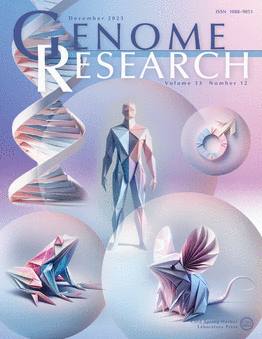基于压缩LCA索引的稳健16S rRNA分类
IF 5.5
2区 生物学
Q1 BIOCHEMISTRY & MOLECULAR BIOLOGY
引用次数: 0
摘要
分类序列分类是元基因组学和进化研究的一个核心计算问题,利用r-index进行压缩索引的进展使全文模式匹配能够针对大型序列集合。但是,将模式序列与其起源分支联系起来的数据结构仍然不能很好地扩展到大型集合。先前的工作提出了文档阵列概况,它使用O(rd)个空间单词,其中r是Burrows-Wheeler变换中最大相等字母的运行次数,d是不同基因组的数量。对d的线性依赖是有限的,因为真正的分类法很容易包含10,000个或更多的叶子。我们提出了一种称为悬崖压缩的方法,该方法在索引SILVA 16S rRNA基因数据库时将该大小大大减少,超过250倍。该方法在我们提出的随机模型下使用Θ(r log d)个期望空间词。我们在一个名为Cliffy的开源工具中实现了这些想法,该工具根据压缩的分类索引对测序读数执行有效的分类分类。当应用于模拟16S rRNA读取时,Cliffy的读取级准确度比Kraken2的高11-18%。与Kraken2和Bracken相比,Cliffy预测的进化支丰度也更准确。总的来说,Cliffy是对压缩全文索引的快速和节省空间的扩展,使它们能够执行快速和准确的分类分类查询。Cliffy的准确性强调了全文索引的优势,与为特定k值设计的k-mer索引相比,全文索引提供了更精确的解决方案。本文章由计算机程序翻译,如有差异,请以英文原文为准。
Robust 16S rRNA classification based on a compressed LCA index
Taxonomic sequence classification is a computational problem central to the study of metagenomics and evolution Advances in compressed indexing with the r-index enable full-text pattern matching against large sequence collections. But the data structures that link pattern sequences to their clades of origin still do not scale well to large collections. Previous work proposed the document array profiles, which use O(rd) words of space where r is the number of maximal-equal letter runs in the Burrows-Wheeler transform and d is the number of distinct genomes. The linear dependence on d is limiting, since real taxonomies can easily contain 10,000s of leaves or more. We propose a method called cliff compression that reduces this size by a large factor, over 250× when indexing the SILVA 16S rRNA gene database. This method uses Θ(r log d) words of space in expectation under a random model we propose here. We implemented these ideas in an open source tool called Cliffy that performs efficient taxonomic classification of sequencing reads with respect to a compressed taxonomic index. When applied to simulated 16S rRNA reads, Cliffy's read-level accuracy is higher than Kraken2's by 11-18%. Clade abundances are also more accurately predicted by Cliffy compared to Kraken2 and Bracken. Overall, Cliffy is a fast and space-economical extension to compressed full-text indexes, enabling them to perform fast and accurate taxonomic classification queries. Cliffy's accuracy underscores the advantages of full-text indexes, which offer a more precise solution compared to k-mer indexes designed for a specific k value.
求助全文
通过发布文献求助,成功后即可免费获取论文全文。
去求助
来源期刊

Genome research
生物-生化与分子生物学
CiteScore
12.40
自引率
1.40%
发文量
140
审稿时长
6 months
期刊介绍:
Launched in 1995, Genome Research is an international, continuously published, peer-reviewed journal that focuses on research that provides novel insights into the genome biology of all organisms, including advances in genomic medicine.
Among the topics considered by the journal are genome structure and function, comparative genomics, molecular evolution, genome-scale quantitative and population genetics, proteomics, epigenomics, and systems biology. The journal also features exciting gene discoveries and reports of cutting-edge computational biology and high-throughput methodologies.
New data in these areas are published as research papers, or methods and resource reports that provide novel information on technologies or tools that will be of interest to a broad readership. Complete data sets are presented electronically on the journal''s web site where appropriate. The journal also provides Reviews, Perspectives, and Insight/Outlook articles, which present commentary on the latest advances published both here and elsewhere, placing such progress in its broader biological context.
 求助内容:
求助内容: 应助结果提醒方式:
应助结果提醒方式:


